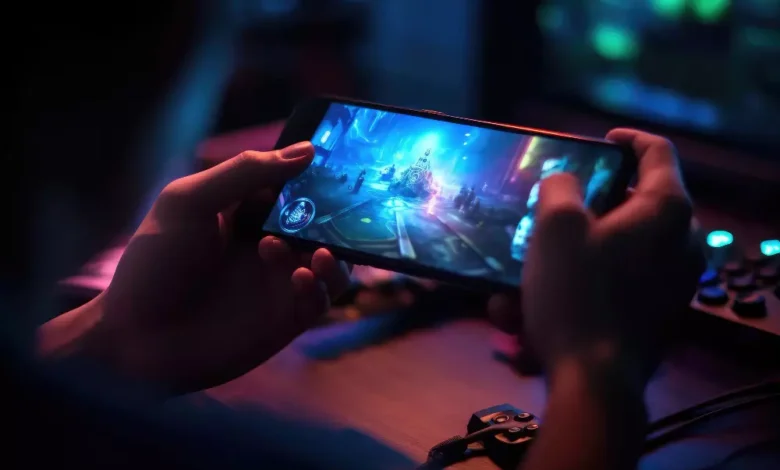Trends in Mobile Game Art: Insights from Leading Art Studios

Introduction
The mobile video gaming sector has actually seen exponential development over the past years, with countless players engaging with games on their smartphones and tablets. A key factor driving this development is the visual charm of mobile games, which considerably improves player involvement and complete satisfaction. Mobile video game art has advanced from simple graphics to high-fidelity visuals, pressing the borders of creativity and technology. This article discovers current patterns in mobile video game art, attracting understanding from leading art studios to understand how they form the visual landscape of mobile video games. Discover more at https://room8studio.com/mobile-game-art/.
Advancement of Mobile Game Art
In the very early days of mobile pc gaming, art was constrained by limited hardware abilities. Simple graphics and standard animations were the norms because of the processing power and screen resolution of early smart phones. Nevertheless, as modern technology progressed, so did the top quality of mobile game art. Today, mobile games feature high-def graphics, complicated computer animations, and detailed settings that match those seen on consoles and Computers. Art studios have played a critical duty in this evolution, leveraging brand-new innovations to create aesthetically sensational games that mesmerize gamers.
Current Fads in Mobile Video Game Art
Hyper-Realistic Graphics
Hyper-realistic graphics objective to reproduce real-life visuals with high accuracy, creating an immersive experience for players. Gamings like “PUBG Mobile” and “Call of Duty: Mobile” exemplify this trend, including lifelike atmospheres, comprehensive character versions, and practical lights results. Hyper-realistic graphics improve gamer immersion by making the video game globe feel tangible and believable. Studios specializing in high-fidelity visuals usually use advanced rendering strategies and effective engines like Unreal Engine to accomplish this level of realism.
Stylized and Artistic Styles
While hyper-realism appeals to some gamers, others choose the beauty and creativity of elegant art. Stylized layouts incorporate a series of creative designs, from cartoonish and wayward to minimalist and abstract. Games like “Clash of Clans” by Supercell and “Monolith Valley” by Ustwo Games display the popularity of distinct art styles. These styles typically focus on dynamic shades, overstated percentages, and imaginative environments. Leading studios known for their artistic creativity emphasize preserving an unique aesthetic identity that sets their video games apart from the competitors.
Use 3D and AR/VR Technologies
The assimilation of 3D graphics in mobile video games has ended up being significantly usual, enhancing the deepness and realistic look of video game environments. Furthermore, Augmented Reality (AR) and Virtual Reality (VIRTUAL REALITY) modern technologies are making their method right into mobile video gaming, providing brand-new degrees of interactivity and immersion. Niantic’s “Pokémon GO” is a prime example of AR in mobile video gaming, blending the digital and physical worlds flawlessly. Studios introducing 3D and AR/VR mobile games concentrate on optimizing these modern technologies to offer smooth and appealing experiences on mobile phones.
Interactive and Dynamic Settings
Interactive and dynamic environments play a considerable duty in contemporary mobile games. These environments react to player actions, creating a much more engaging and immersive experience. As an example, “Genshin Influence” by miHoYo includes a highly described open world where players can connect with different aspects, from weather changes to destructible items. Studios concentrating on interactive style utilize progressed physics engines and real-time making to create vibrant environments that improve gameplay and player interaction.
Study from Leading Art Studios
Supercell
Supercell is renowned for its distinct art style and successful mobile games like “Clash of Clans” and “Brawl Stars.” The workshop’s video games are defined by lively shades, playful character designs, and a natural aesthetic language that interests a wide audience. Supercell’s technique to mobile video game art stresses availability and fun, making sure that their video games are aesthetically engaging and easy to browse. This dedication to a distinct and enticing art design has made Supercell a leader in the mobile gaming market.
King
King, the workshop behind the widely popular “Candy Crush Legend,” has a distinctive approach to mobile video game art. Their video games are recognized for their bright, vivid visuals and easy, instinctive designs. King’s use of appealing shades and simple auto mechanics makes their games immediately recognizable and highly addictive. The studio’s art design concentrates on creating a visually enjoyable experience that attracts gamers in and maintains them engaged. King’s success in the casual gaming market highlights the significance of aesthetically appealing and straightforward game design.
Niantic
Niantic has changed mobile pc gaming with its use of AR innovation in games like “Pokémon GO” and “Harry Potter: Wizards Join.” Niantic’s video games perfectly incorporate digital components right into the real world, supplying an immersive and interactive experience. The studio’s cutting-edge use AR has actually established a new criterion for mobile game art, demonstrating the possibility of mixing online and physical atmospheres. Niantic’s success emphasizes the relevance of leveraging innovative innovation to produce unique and appealing game experiences.
Rovio Amusement
Rovio Enjoyment, understood for the “Angry Birds” collection, has a distinctive art style identified by lively, overstated characters and vibrant animations. The studio’s video games are aesthetically engaging and instantaneously recognizable, with a focus on enjoyable and accessibility. Rovio’s technique for mobile video game art emphasizes vibrant shades, simple forms, and lively animations, creating a memorable and pleasurable gamer experience. The success of “Angry Birds” highlights the effect of a solid aesthetic identity and interesting art design in mobile video gaming.
Difficulties and Opportunities in Mobile Game Art
Creating high-quality art for mobile video games provides numerous obstacles, consisting of balancing efficiency and visual top quality. Smart phones have differing specs, and guaranteeing that games run smoothly on all devices without compromising on aesthetic fidelity is a significant challenge. Nonetheless, these challenges additionally existing possibilities for innovation. Studios can check out brand-new strategies, such as step-by-step generation and AI-driven art production, to maximize efficiency and enhance visual quality. The ongoing innovation in mobile hardware additionally offers brand-new possibilities for producing even more in-depth and immersive video game environments.
Future Expectation for Mobile Video Game Art
The future of mobile game art looks appealing, with numerous arising patterns set to shape the industry. Increased use of AI in art production, innovations in step-by-step generation, and the continued integration of AR/VR technologies are expected to drive technology in mobile game art. Furthermore, the rollout of 5G technology will certainly allow a lot more complicated and visually rich games, boosting the total player experience. As mobile video game art continues to develop, studios will certainly push the boundaries of imagination and modern technology to create much more interesting and immersive games.
Final thought
The art of mobile video games has come a long way from its humble beginnings, advancing into an innovative and indispensable part of game advancement. Trends such as hyper-realistic graphics, elegant styles, 3D and AR/VR combination, and interactive atmospheres are forming the future of mobile video game art. Insights from leading art workshops like Supercell, King, Niantic, and Rovio Home entertainment highlight the importance of creativity and technological innovation in developing aesthetically attractive and interesting mobile games. As the market continues to expand, the duty of art in mobile video game advancement will stay critical, driving player interaction and fulfillment.






